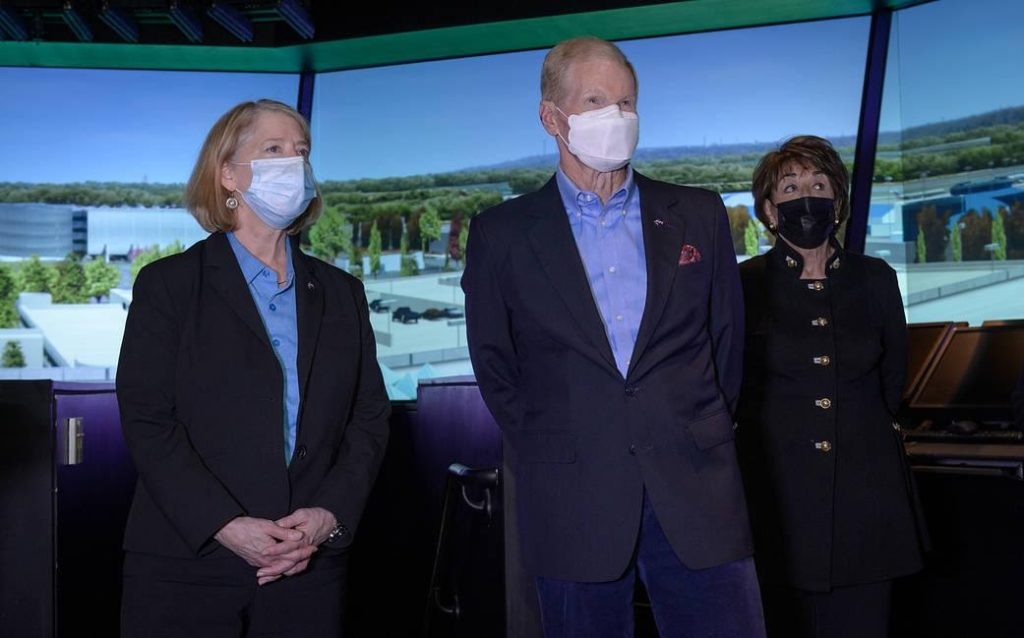On October 12, NASA Ames SimLabs was honored to host NASA Administrator Bill Nelson, Deputy Administrator Pam Melroy, and Congresswoman Anna Eshoo as they toured the Future Flight Central (FFC) air traffic control tower simulation for the first time. The focus of their FFC visit NASA’s Airspace Technology Demonstration 2 (ATD-2), which came to a highly successful conclusion at the end of September.

Photo Credit: NASA/Dominic Hart.
NASA’s ATD-2 was run out of the Aviation Systems Division at NASA Ames Research Center in collaboration with the FAA, American Airlines, Southwest Airlines, the National Air Traffic Controllers Association, Charlotte Douglas International Airport, Dallas/Ft. Worth International Airport and Dallas Love Field Airport. Researchers developed technologies that predict airport traffic conditions and determine the best time for departing flights to push back from the gate, reducing delays and shifting wait time to the gate, instead of on the taxiway with engines running. The ultimate goal is to get travelers from gate to runway to the sky with minimal delay, benefiting schedules, passengers, airlines, and the environment.
Over the life of ATD-2, the FFC played a central role in assessing the effectiveness of those technologies through a series of simulations spanning several years. During that period, FFC was leveraged to develop and test NASA’s integrated arrival, departure, and surface (IADS) concept and technologies to demonstrate the benefits of an IADS traffic management system for complex terminal environments in a simulated environment at Charlotte and Dallas-Fort Worth before they were deployed for field demonstrations at those airports.
MFRA simulation engineers were able to configure the simulation out-the-window database and displays to accurately and realistically represent the surface operations environment at those airports. Actual ramp operators and air traffic controllers then ran focused scenarios to test the strategic/tactical fusion of surface scheduling and new interface changes to the ATD-2 technologies being evaluated as researchers collected data that was analyzed to guide future IADS changes.
With the tour stop at FFC our MFRA team was given the opportunity to demonstrate to the administrator, deputy administrator, and their team the capabilities that the NASA Ames Simulation Facilities can provide to support climate-related research, especially wildfire prevention and reduction of emissions, with the use of our air traffic management simulation tools.